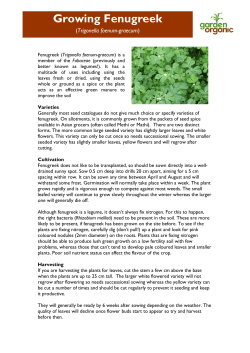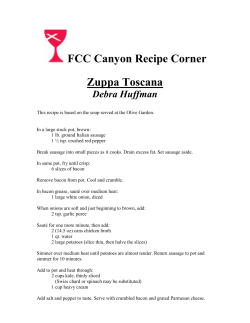
Potting out the seedlings:
Potting out the seedlings: When the seedlings are about 5 centimetres tall, or have two or more true leaves, they may be put out into separate pots or tubes. Small pots or tubes may be used, rather than larger pots, to save the cost of soil or potting mix. Potting mixes in pots may dry out quickly and need to be watered more often than pots containing propagating mix. 1. Soak the seedlings in their pot by placing it in a bucket of water. 5. Place the newly potted seedlings together on to a large sheet of plastic in a semi-shaded place. Better, elevate the pots on a piece of mesh so they can be ‘airpruned’. Water well. 6. Gradually move the seedlings, as they grow, out into full sun (except for species that need very shaded conditions). This sun-hardens them, making them ready for their final growth conditions. 7. Plant the seedlings out into their final home when their roots have just filled the pot or tube. If you don’t have time to plant, ‘pot them on’ to bigger pots or tubes. Note: native tubes, and elevating your plants, helps minimise the chance of root coiling. Planting into final positions: 2. Remove the propagating mix with the seedlings, from the pot. 3. Separate one seedling at a time. Be careful not to damage the roots. Positions for new plants should be typical of those in which they occur and grow best naturally. Sunlight or shade, wet or dry, propagating mix and drainage are factors to consider. Recent rain and high soil moisture levels will give the new plant a good start. In dry and windy conditions it may be necessary to water new plants every few days for several weeks. Away from buildings, newspaper (6 or more sheets thick) may be placed around each plant and mulch added to retain moisture, keep roots cool and to deter weed growth. Bribie Island Caboolture Newly planted and mulched. Somerset Region MORETON BAY REGION Advantages of using locally native species Strathpine Plant after 2 years • they provide appropriate food for local fauna • they provide suitable habitats and micro-habitats for local fauna • we are preserving the genetic pool of local species North Stradbroke Island This brochure is one in the series, Living with the Environment, produced by Moreton Bay Regional Council. These brochures feature the many marvellous plants, animals and other natural features of the region. They are designed to help residents know, understand, love and conserve our unique natural heritage. Community Nurseries Community nurseries sell good quality local native plants from locally collected seed. They also provide a great opportunity for volunteering and learning about seed collecting and plant propagation. Contact a nursery near you for more information and to see how they can use your excess seed. Visit www.moretonbay.qld.gov.au • we are helping to preserve the natural Australian landscape character of our area. Pot-bound plant roots Port of Brisbane MORETON BAY REGION • they are adapted to local conditions • they will not become weeds Moreton Bay Brisbane The use of locally native plants in any plantings is highly recommended because: Place the plant and its pot in a bucket of water and wait for the bubbles to stop rising. Spread the fingers of one hand over the top of the pot with stem of the plant between the fingers. Invert the pot and tap on the base of the pot to remove the plant. Note: a very badly coiled and damaged root system will remain this way once planted - it will not `get better’. The amount of time, effort and money required to maintain a plant once it is in the ground means that the quality of plant as it goes in is of utmost importance. Sunshine Coast Redcliffe Clear away all weeds and unwanted grass for about half a metre and, dig a hole just deeper and wider than the pot. In compacted areas, the bigger the hole, the better the plant will grow. Loosened soil is easier for plant roots to penetrate. Fill this with water. If the roots are coiled around each other they should be gently prised apart before planting. 4. Place each seedling into its new pot or tube, pushing in the propagating mix (or potting mix) so that the roots reach down towards the bottom, and the base of the stem is about 2cms from the top rim of the pot. Make sure roots are not coiled, or they will grow this way. Label each pot by writing the plant name on the outside of its pot. Put the plant in so that it is slightly below the surrounding ground level, and make a shallow dish in the soil so that rain will flow towards the trunk of the plant. Printed on Tudor RP. 100% Recycled. Every tonne of Tudor RP sold, donates $100 to Landcare Australia. These funds are helping restore old landfill sites around Australia. © Moreton Bay Regional Council 2010 Growing Local Native Plants from Seeds Importance of using seeds of local plants 3. Collect only mature fruits/ pods/‘nuts’. Maturity of fruits/pods is often indicated by a colour change. Make sure that they have not already dried, opened and released the seeds. Some seeds can be collected under or near the parent tree. These, if fresh, will be ready for planting. Plants that are growing naturally in a particular area are usually well adapted to the surrounding conditions. They often differ genetically from plants of the same species in other places. By growing the locally-adapted variety (provenance) of a species, we help to maintain its genetic diversity. The greater the variation of characteristics within a species, the greater its chances of survival in the future. Growing your own native plants from seeds can be a rewarding (and cheaper) option, especially if you have large areas to plant. Native orchids are protected Native Plants Native cycads are protected Seed pods of native plants Some rules for collecting local fruits/seeds: (Note: A fruit is a vessel containing seeds, be fleshy or dry. Different fruits may require different treatments before sowing.) 1. Collect fruits/seeds from several individual plants of the species rather than only one plant. This will ensure a greater variety of characteristics in the seedlings. 2. Collect no more fruits/seeds than are needed (a general rule of thumb is to collect less than 10% of the seed on each individual plant). Seeds/ fruits are thus left on each parent plant for its own reproduction in the habitat, and also as food or other requirements for other organisms. 4. Seek permission from the property owner. On public land, A Seed Collectors Permit, from the Department of Environment and Resource Management (3202 0200), may be necessary for some species (such as some ferns, orchids, grass trees, cycads, etc). 5. Before collecting the seeds, have everything prepared for their sowing. Plant them as soon as the seeds have been removed from the fruits (or after any special treatment that may be required). Preparing the seeds for planting: A. Plants with seeds in dry pods, gum nuts, etc (such as gum trees, bottlebrush, paperbarks, tea trees, some banksias and grevilleas) These plants have ‘seed pods’ that dry as they ripen and require similar conditions for seed germination. Removing the seeds from the fruit (seed pods/gum nuts, etc): 1. Place the ripe seed-pods in a paper bag (not plastic), or in a wide, open cardboard box and put them in a warm dry place out of the wind. Within a day to a week, the pods will dry and open and release the seed(s). Note: Some seed pods (e.g. some banksias) will not open unless the pods are heated to about three hundred degrees in an oven. D.Plantswhoseseedsseemtodefyallother methodsofpreparation (such as gahnias, and some grasses and lomandras, some grevilleas and banksias, etc.) Preparing the seeds for germination: Chaff (left) and seeds 2. Separate the seeds from the seed-pods and chaff. If the seeds and chaff are very small, this may be difficult and time consuming. Separating them is not critical, and the seed and chaff can be sown together. B. Plantswithseedsinfleshyfruit (suchasmanyrainforestplants,lillypillies,nativelaurels) 1. Soak the seeds in water for a few hours, then mix the wet seeds among some dry grass and/or newspaper pieces. 2. In a safe place, set fire to the grass and/or paper and allow it to burn – the smoke seems to be the factor that aids germination, so the seeds do not have to be burnt. 3. Collect the smoked seeds and the remains of the burned material for sowing together. Preparing the seeds for germination: Or: Remove the flesh from the seeds by hand and Sow seeds and burn dry leaf-litter on top of the tray. When the fire is out but still smoking, water it to move the smoke through the seed-raising mix. Soak the seeds for 48 hours – this kills burrowing grubs, Or: 1. Soak the whole fruit in a bucket of water – fermentation will remove flesh, and appears to enhance germination of some species. 2. Remove flesh (try rubbing on a large sieve) and plant as soon as possible - this avoids mould growing in the potting mix. C. Plants with hard seeds in bean-like pods (such as wattles) Preparing the seeds for germination: 1. Put seeds in a cup and fill the cup with boiling water. 2. Allow the seeds to soak for 24 hours. Many plants with this type of seeds may instead be germinated by rasping through the outer skin of the seed with the edge of a file. Note: A combination of preparation methods may be used for those species whose seeds do not respond. SeedS of Some SPeCIeS (SUCh AS CyCAdS And BLUe QUAndong) mAy TAke 12 monThS or more To germInATe; So PATIenCe IS needed. Germinating the seeds: 1. If the seeds are large and winged, use sharp scissors to cut off the wings – this may aid germination. 2. Fill a seed raising tray, punnet, or plant pot (s) with moist, seed-raising (propagation) mix. Sifted potting mix or a homemade mix of clean sand and compost can be used (and will be more economical than store bought seed-raising mix) Ensure the compost is well rotted and weed-seed free. Seeds need oxygen for respiration or they suffocate and die. To improve aeration, seed raising mixes usually have quite a bit of sand or vermiculite. 3. Spread the seeds evenly over the surface of the soil. If the seeds are very tiny they can be mixed with sand as an aid to even spreading. (If seeds are very large, one per pot may be sown.) 4. Sprinkle the propagation mix over the seeds to a depth of a few millimetres for the smaller seeds and to a few centimetres for larger ones, and press down lightly. 5. Push a label (eg made by cutting up a plastic icecream container) into the soil at the edge of the pot. Permanent ink or ‘lead’ pencil can be used to record the species, date and locality of collection, and the date of planting. 6. Keep the planted seeds in a place where they receive morning sun for about an hour or two each day. Use a spray bottle or fine sprinkle nozzle to water. In colder months, water during the morning; in warmer times, water during the late afternoon.
© Copyright 2025





















